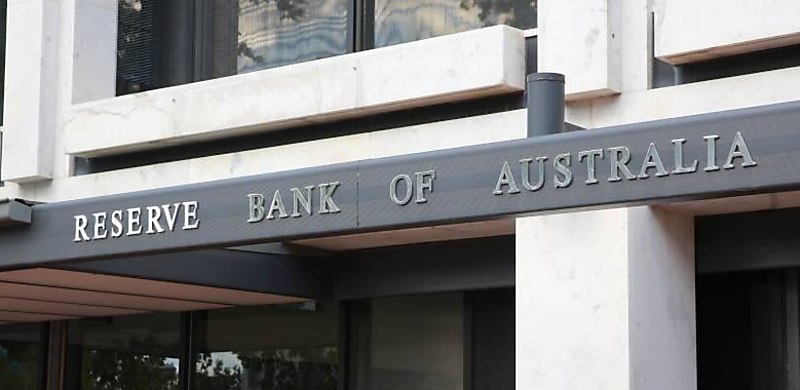
The central bank’s Monetary Policy Board has voted unanimously to lower the cash rate to 3.60 per cent.
The Monetary Policy Board of the Reserve Bank of Australia (RBA) has lowered interest rates by 25 basis points to bring the cash rate down to 3.60 per cent.
Marking the third reduction in the current easing cycle, which began in February, the move brings rates to their lowest level since May 2023.
In an unattributed record of votes, the RBA revealed that the move was made unanimously by members.
Speaking at a post-meeting press conference, RBA governor Michele Bullock said the central bank continued to analyse what developments meant for inflation and employment, while warning that the global outlook remains unpredictable.
She added that the RBA expected “labour market conditions to remain around the current levels and underlying inflation to remain sustainably at the midpoint of the two to 3 per cent target range”.
Bullock stressed that: “Forecasts imply that the cash rate might need to be a bit lower than it is today to keep inflation low and stable and employment growing, but there is still a lot of uncertainty, so the board will continue to focus on the data to guide its policy response.
“Monetary policy remains well positioned to respond to shocks that could come our way, and the board will keep doing what it needs to do to keep inflation down and maintain a healthy jobs market.”
Treasurer Jim Chalmers said the latest rate cut “reflects the substantial and sustained progress we’ve made on inflation in a volatile and uncertain global environment."
In the RBA’s post-meeting statement, the board highlighted progress made on easing inflation as a contributory factor for cutting rates.
“With underlying inflation continuing to decline back towards the midpoint of the 2–3 per cent range and labour market conditions easing slightly, as expected, the board judged that a further easing of monetary policy was appropriate. This takes the decline in the cash rate since the beginning of the year to 75 basis points,” it said.
“The board nevertheless remains cautious about the outlook, particularly given the heightened level of uncertainty about both aggregate demand and potential supply.”
It said it would be “attentive to the data and the evolving assessment of risks” to guide its decisions and “pay close attention to developments in the global economy and financial markets, trends in domestic demand, and the outlook for inflation and the labour market”.
“The board is focused on its mandate to deliver price stability and full employment and will do what it considers necessary to achieve that outcome,” it added.
The market, including all major banks, was near-unanimously forecasting rates to drop after the central bank left the interest rate unchanged at its July meeting while it waited for more economic data, including quarterly Consumer Price Index (CPI) data.
Indeed, after the central bank’s July cash rate announcement, RBA governor Bullock highlighted the board was “waiting to confirm” if quarterly inflation was “still on track to meet inflation and employment objectives”.
‘Certainly room’ for more cuts
Commenting on the RBA’s decision, Finance Brokers Association of Australia (FBAA) managing director Peter White welcomed the rate cut, noting it would support more borrowers.
“A lower rate will allow more people to access funds needed to purchase or refinance, and as the Australian Prudential Regulation Authority (APRA) is refusing to budge on the buffer rate, every reduction in the interest rate helps more people,” White said.
Anja Pannek, CEO of the Mortgage and Finance Association of Australia (MFAA), said the rate cut would provide further financial relief for borrowers.
“With mortgage repayments making up the largest financial commitment for many households, our members would expect lenders to deliver the full benefit of any rate reduction to their clients,” she added.
“This latest cut will lift borrowing capacity and improve mortgage serviceability. It will encourage more Australians, whether first home buyers, investors, or refinancers, to contact an MFAA accredited broker and discuss how they can get on the property ladder or get a better mortgage deal.”
Mark Haron, executive director at aggregator Connective, added: “Today’s rate cut was well timed. The RBA had clear scope to ease pressure on households with inflation softening and economic growth subdued.
“It is not a silver bullet, but it provides borrowers with financial and psychological relief – and keeps brokers central to the conversation.”
Looking ahead, Haron added: “If inflation and economic growth continue on their current path, there is certainly room for one or two more cuts this year.”
Simon Bednar, CEO of aggregation group Finsure, also noted that conditions were ideal for further interest rate relief, noting the next RBA board meeting is next month.
“Inflation has been within the RBA’s target band for almost 12 months and softer CPI figures for the June quarter as well as sluggish GDP growth have increased expectations for a rate cut,” he added.
He outlined that some lenders may delay passing on the August rate cut to “claim back some income from a higher net interest margin”, suggesting that brokers therefore “have an opportunity to help clients navigate the various lender responses and reaffirm their position as a trusted financial partner.”
David McQueen, CEO at brokerage Loan Market, suggested that the current rate drop means a buyer earning $120,000 a year could see their borrowing capacity increase by around $42,000 compared to the start of the year.
“The cash rate cut will also bring more relief for mortgage holders who have been diligently meeting repayments while rates have been high,” he said.
Meanwhile, Mortgage Choice CEO Anthony Waldron said the rate drop could spur borrowing activity.
“The RBA’s decision to cut the official cash rate will be welcomed by borrowers and buyers around the country, following last month’s surprising decision to keep the cash rate on hold,” he added.
“The latest cash rate cut should boost the borrowing capacity of buyers hoping to enter the market this spring. Buyers hoping to succeed in a hot market should get expert advice early on.”
Lenders have also noted the rate drop, with Barry Saoud, general manager for mortgages and commercial lending at non-bank lender Pepper Money, adding: “With inflation now sitting comfortably within the RBA’s target range, today’s rate cut to 3.60 per cent marks a clear shift toward more supportive monetary conditions.
“This is welcome news for the housing market. Lower rates are expected to boost borrowing capacity, lift buyer sentiment, and re-energise demand. In the non-bank space, certainty fuels confidence, and confidence creates momentum. We’re already seeing further improvement in borrower appetite to buy, refinance, or invest.”
[Related: Major banks align in tipping RBA rate cut]

